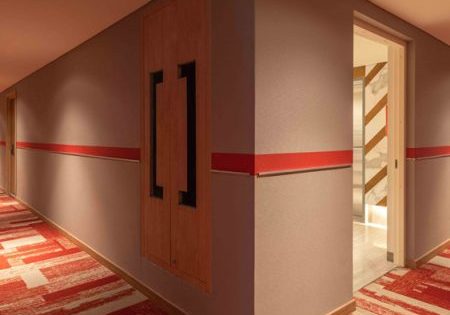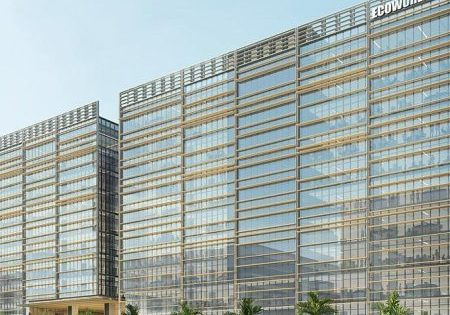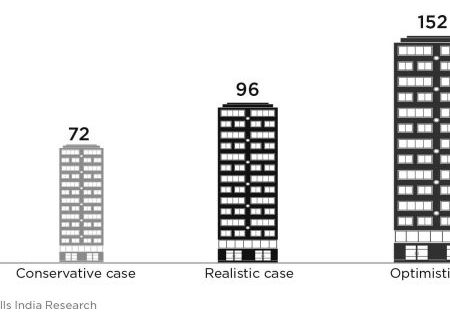Your authors outline how elevator technology is leveraged for maximum VT system efficiency.
by Argenio Antao and Sneha Sabu
Real estate has been one of the most reluctant industries to adopt new technology and, therefore, has been a relatively late addition to the digital bandwagon. COVID-19 has forced a digital transformation in this industry as the need for social distancing and safer solutions became paramount.
Going forward, it is evident that the digital transformation has only begun to touch the real estate sector and, by extension, the VT industry.
Digitalization is defined as the use of digital technologies in the way business is done, be it in the use of information technology in marketing or AI algorithms for better analytics leading to more efficient decision making. It also refers to using technology to change the traditional business model and provide new value-producing opportunities. In short, it is the process of transforming business from conventional to digital.
Recently, Colliers India announced the launch of its pathbreaking technology platform: CoGence, an AI-driven platform that enables remote site monitoring and advanced analytics, thereby ensuring faster and more efficient management of its construction projects. The platform will significantly boost the construction and project management business in India.
The presence of technology has been slowly but surely increasing in the real estate sector for a while now. Today, almost all real estate businesses utilize 3D virtual walkthroughs, digital twin, automated systems in business development, client engagement, contract management and facilities management in one form or another.
A 3D virtual walkthrough is a virtual rendering of the physical property detailed in every possible aspect. The extended reality in augmented reality/virtual reality is being used to add a sense of reality to these walkthroughs. These virtual tours allow potential clients to check out every room and corner from the safety of their homes with a few clicks of their mouse. The client gets the sense of walking through the site and looking around as if they were standing at the actual site. As a result, the client gets a more immersive experience, enabling them to make a more informed decision and increase satisfaction with the process.
Going one step further, 3D virtual tours engage animations and representations to present not only what the site looks like now, but what it could look like. Most walkthrough software also allows the client to try out various options like wallpaper and furniture layout. These virtual tours save time and cut costs from doing away with physical home tours and offering a safer option to market and engage clients, especially in a pandemic situation like ours today.
Technology is further harnessed to create solutions like automated apartment matching, intuitive rental portals, smart digital contracts, digital contract management and contactless finances, all of which facilitate and change the way real estate is being purchased, sold, leased and managed.
Another emerging concept to note here is the “Digital Twin.” A digital twin is the digital representation of a physical asset complete with all relevant asset data and its components. Building information modeling (BIM) and the Internet of Things (IoT) are used to create a digital twin of the property. The property owners can take the management of their assets into their own hands with centralized dashboards providing insights into energy, gas and water usage, track needed maintenance and much more.
In keeping with the trend, the vertical-transportation (VT) sector of real estate has also been trying to bring in innovation and digitalize its systems. Lifts and elevators have become an essential part of our everyday lives today. Lifts have evolved from single-call-button systems in the early days to the destination-managed control systems of today. VT equipment has been digitalized to intelligently communicate with building management systems using IoT and cloud computing. Myriad information like status, errors and trip parameters are now transmitted to and managed by technical control centers, reducing manual intervention in these processes. The data analytics are then used to predict the current and future behavior of the equipment, enabling the building management processes to take proactive maintenance activities as and when required. The result is a self-managing, self-sustaining ecosystem with maximum efficiency and minimum downtime.
The urbanization rate is expected to only move upward, with properties expanding vertically and horizontally. The average height of buildings has been increasing steadily across regions. Hence, the dependency on VT will be significant.
As we enter the era of smart cities, digitally enabled VT systems will be necessary. To cater to increased traffic, the industry will have to automate repetitive tasks in manufacturing, installation and maintenance. In other words, we will have to engage manual touch in tasks where creative thinking and problem-solving are required, and delegate every other task to AI-enabled robots.
Further research needs to be initiated toward innovations like regenerative drive systems to minimize energy consumption and maximize efficiency. As our world becomes greener aware, the VT industry will have to reduce its overall carbon footprint and remain relevant in the changing times.
Another aspect of elevator technology that could profit from digitalization is elevator safety. Elevator safety deals with accidents related to the equipment used and the possibility of criminal activities for which elevators can provide an arena.
The industry has already taken considerable strides in minimizing the risk of accidents through its equipment. This effort can be advanced further by increasing the integration of the elevator systems with the building systems to detect and deal with any risk factors before they become events. AI-enabled algorithms can be engaged to constantly monitor the system and spaces to which it caters, and detect dangerous situations that can then auto notify the concerned authorities for immediate necessary action.
The requirements to protect against criminal acts are predicted to grow in the coming years. Hence, the future will require more innovative solutions like intuitive access control systems linked to facial recognition (FR) systems, and FR databases that could prevent access to non-authorized or blocked persons and reduce the possibility of criminal acts.
Going forward, it is evident that the digital transformation has only begun to touch the real estate sector and, by extension, the VT industry. We are poised at the brink of a new era in real estate wherein technology and digitalization will be highly relevant critical factors. There is an urgent need to renew and redouble our efforts to find and incorporate innovative solutions into our traditional systems. It is time to think out of the box and aim for a paradigm shift in the way the real estate sector and VT industry works, for, after all, when it comes to creativity and innovation, the sky is our limit.
Get more of Elevator World. Sign up for our free e-newsletter.





